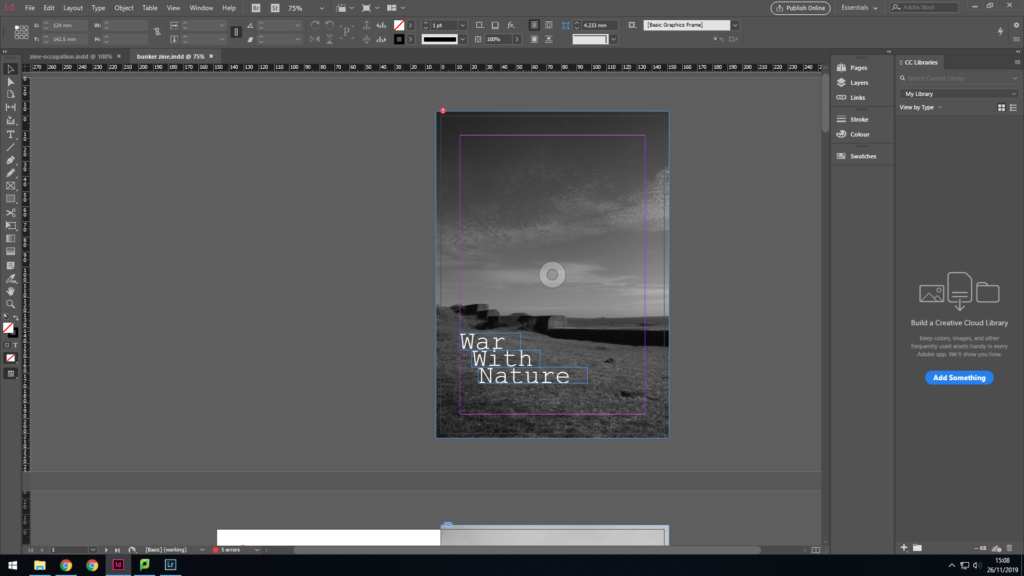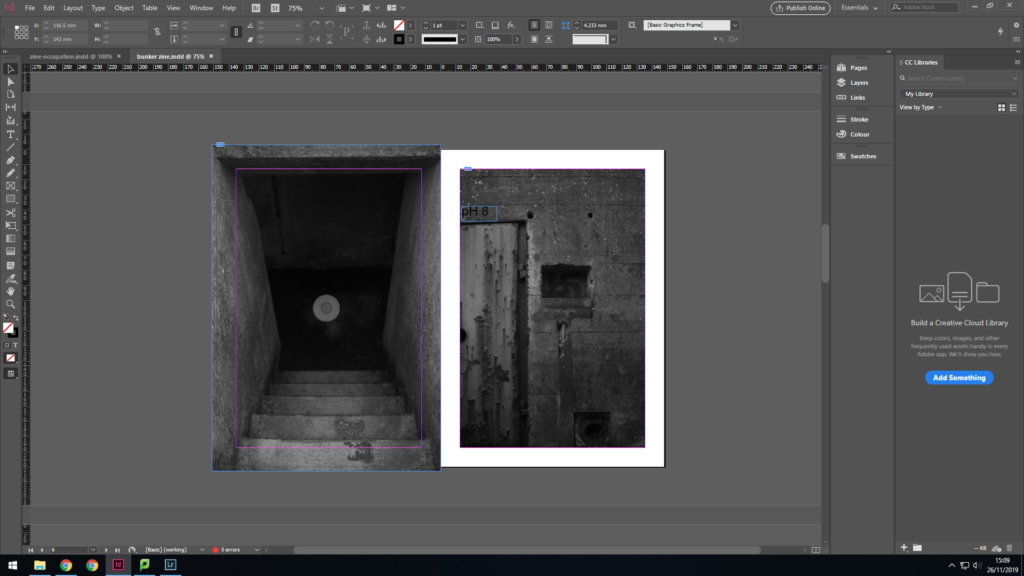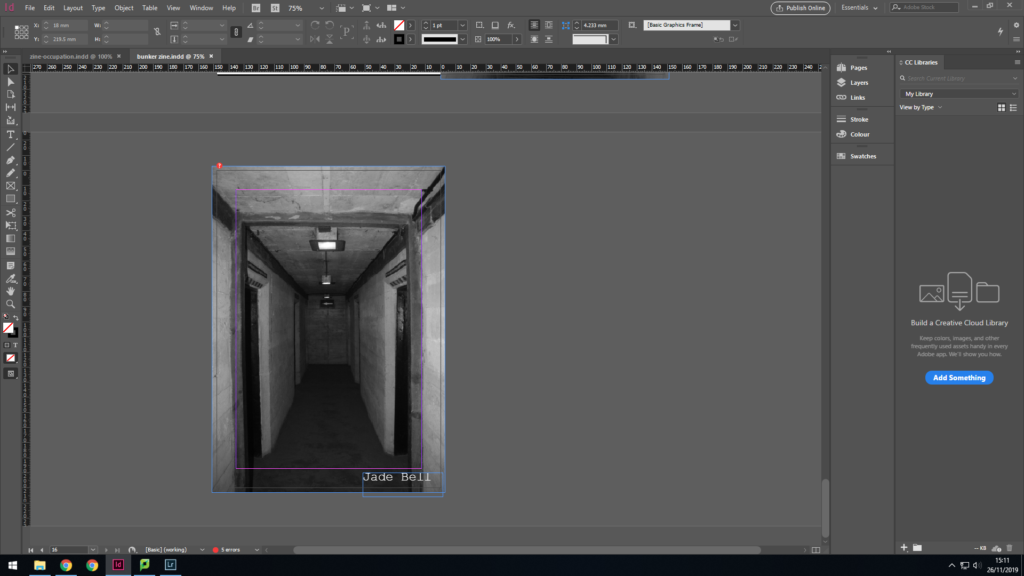I named my zine ‘war with nature’ because I wanted to capture the relationship between the islands scenery and the man-made bunker. the key concept was to photograph how nature as grown around the fortifications similarly to how after the occupation everyone had to rebuild themselves with what had been left behind my the German’s. The harmony in which bunkers and natures now live in symbolizes the end of the war and how Jersey is now peaceful place, war free. The fact that the bunkers are permanent to the island, mirrors how the soldiers after WWII had to live with permanent PTSD and trauma from the war fields. The majority of German fortification are on Jersey’s coastline which have some of the islands most scenic views, the fort and bunkers add a sense of historical background to these landscapes.

I went for a minimalist font, which looks like a typewriting, providing war connotations. This image is of the sea wall on the north of St Ouen’s coastline. The wall is structured like stairs it moves in height with the uneven land, my title is mimicking this shape.

Next I used another image from the sea wall fortification at St Ouens bay like the font cover image. I put a border around it to seperate the two images, to signify the spread of bunkers across the island. The second image of a bunker at Noirmont Point part of Battery Lothringen. I wanted to start the book simple and set the scene and theme with images of bunkers in and amoung nature. The typography is of a German soldier and Jersey soldier, I chose this font as it creates a typewriter effect. I placed them parallel to each other to express that even though they were enemies they were still both human.

I then moved onto a double page spread which was of the weaponary on Battery Lothringen. This time nature is represented by the sea, which is a large part of Jersey because of it’s size. We also forget how significant the sea was during the war for transporting things like Red Cross parcels.

The next two images are close ups of features of bunkers, so the narrative is becoming more detailed by focusing on their characteristics. The first image is very dark and gives connotations of the unknown which is how the locals felt during the occupation, in a state of not knowing whats next.

Again I have gone even further into the bunker with his image of the lighting. Light was such an important part of life in the bunkers because they didn’t have the sun as there source. When it came to lighting that was where nature couldn’t adapt, which is like how some people during the war couldnt adapt back to normal life and had severe PTSD.

The next two images are of the radio tower at Corbiere so the book is chrongically making it’s way along the Jersey coast line. The first image is of my own photography and the seccond is a merger of my own and an archive image during the occupation. I wanted to capture the change in the nature around the tower and how its adapted to live around a man-made histroical eye-sore.

This image is also at Corbiere but is of a German look out town, which would have been stragetically placed within the greenary for camoflague. The shrubs have continued to grow around it and inside of it, which helps it to look like part of the landscape. On the other page is a poem from Kingsley Amis called Wasted which he wrote during the occupation. I included this poem to also move focus to the people rather than the environment.

I am focusing back on nature with this image with a bunker from Le Houge Bie. This bunker is different from all the others as it’s fully submergeed by greenary. The second image is of the inside and it create a juxtaposition between the green exterior and concrete interior.

I finished with an enigmatic image of a eerie looking corridor to bring home truths of the occupation. Although people moved on and started a new life, it was still a burden of memories they had to live with for the rest of their life. The war bought many changes, some for the best, others for the worst.
